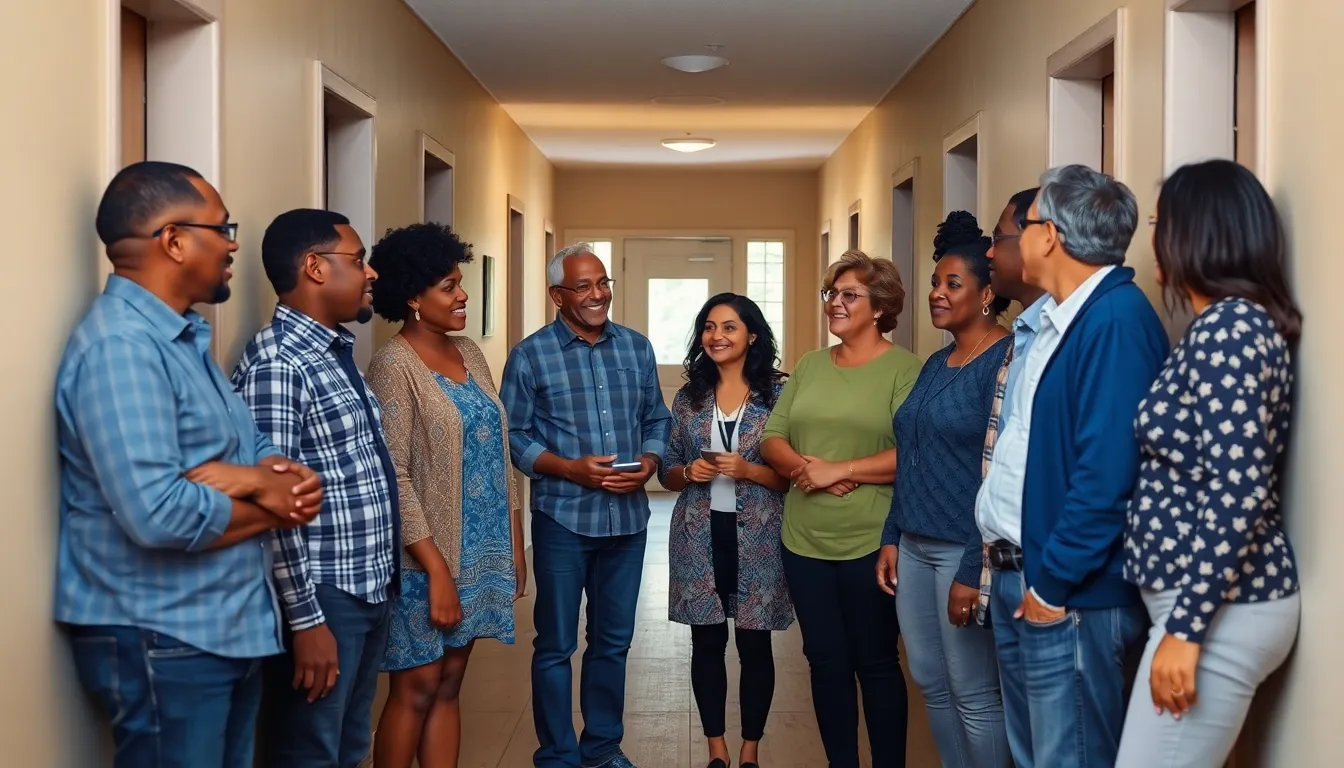Navigating the world of residential leases can feel overwhelming, especially for first-time renters. Understanding the ins and outs of lease agreements is crucial for protecting one’s rights and ensuring a smooth living experience. With various terms and conditions often buried in legal jargon, many tenants find themselves unsure of what to expect.
This article aims to demystify residential leases, offering practical advice that empowers renters to make informed decisions. From key clauses to negotiation tips, it provides essential insights that can help avoid common pitfalls. Whether someone is signing their first lease or looking to renew, having the right knowledge can make all the difference in securing a fair and beneficial agreement.
Table of Contents
ToggleUnderstanding Residential Leases
Navigating residential leases is essential for renters, especially first-timers. Familiarity with various lease types and key components allows tenants to make informed decisions.
Types of Residential Leases
- Fixed-Term Lease: A fixed-term lease runs for a specified duration, commonly 12 months. Tenants must vacate the property or negotiate renewal upon expiration.
- Month-to-Month Lease: A month-to-month lease offers flexibility, requiring only a 30-day notice for termination. This lease type suits individuals seeking short-term arrangements.
- Sublease Agreement: A sublease agreement permits tenants to rent a portion or the entirety of their leased space to another party. Landlords typically require approval before subleasing.
- Residential Lease with Option to Buy: This lease allows tenants to purchase the property after a predetermined period. It includes terms that protect both the buyer and seller.
Key Components of a Lease Agreement
- Parties Involved: A lease identifies the landlord and tenant(s) clearly, ensuring legal accountability.
- Property Description: A comprehensive description of the leased property, including unit type and address, aids in clarity.
- Lease Duration: The lease specifies the start and end dates, detailing any renewal options.
- Rent Amount and Payment Terms: Lease agreements outline the monthly rent and due dates, along with acceptable payment methods.
- Security Deposit: Information about the security deposit includes the amount, conditions for its return, and the timeframe for returning it after the lease ends.
- Maintenance and Repair Responsibilities: Clear guidelines on maintenance duties and emergency repair procedures protect tenant rights.
- Pet Policy: Detailed pet policies inform tenants about any restrictions, fees, or deposits related to pet ownership.
- Termination Conditions: The agreement specifies conditions under which either party can terminate the lease, promoting transparency and fairness.
Understanding these types and components of residential leases fosters better decision-making and enhances tenants’ living experience.
Rights and Responsibilities of Tenants

Tenants possess specific rights and responsibilities that shape their rental experiences. Understanding these elements is crucial to fostering a harmonious landlord-tenant relationship.
Understanding Tenant Rights
Tenants hold several fundamental rights designed to protect their well-being. These include:
- Right to a habitable living space: Leases must provide safe and sanitary conditions. Landlords must address issues like leaks, heating failures, and pest infestations promptly.
- Right to privacy: Landlords must provide reasonable notice before entering a tenant’s unit. Typically, 24 hours’ notice is standard for non-emergency situations.
- Right to fair treatment: Legal protections against discrimination exist under the Fair Housing Act. Tenants cannot face unfair treatment based on race, color, religion, sex, national origin, familial status, or disability.
- Right to return of security deposit: After lease termination, tenants should receive their security deposits back, minus any documented deductions for damages beyond normal wear and tear.
- Right to organize: Tenants can join or form tenant unions or associations to advocate for their rights and negotiate collectively.
Tenant Responsibilities in a Lease
Tenants share specific responsibilities that ensure a smooth rental experience. Key responsibilities include:
- Paying rent on time: Tenants must adhere to the rental payment schedule stated in the lease. Late payments can result in fees or eviction.
- Maintaining the property: Tenants should keep their living spaces clean and report any maintenance issues immediately. This includes maintaining appliances and fixtures.
- Following lease terms: Tenants must comply with all provisions in the lease agreement, including noise restrictions and pet policies.
- Notifying landlords of issues: Reporting necessary repairs or safety concerns promptly helps maintain the property and keeps residents safe.
- Respecting neighbors’ rights: Tenants should avoid disruptive behaviors that may interfere with neighbors’ enjoyment of their homes.
Understanding these rights and responsibilities equips tenants with the knowledge necessary to navigate rental agreements effectively.
Rights and Responsibilities of Landlords
Landlords maintain specific rights and responsibilities that ensure a lawful and equitable rental process. Understanding these aspects helps foster positive relationships between landlords and tenants.
Understanding Landlord Rights
Landlords possess rights designed to protect their investments. Key rights include:
- Right to Collect Rent: Landlords expect tenants to pay rent on time as outlined in the lease.
- Right to Enter Property: Landlords may enter the property for repairs, inspections, or emergencies, typically with prior notice.
- Right to Evict: Landlords can evict tenants for legitimate reasons, such as non-payment of rent or lease violations, following appropriate legal procedures.
- Right to Retain Security Deposits: Landlords can withhold security deposits for unpaid rent or damages beyond normal wear and tear.
- Right to Set Lease Terms: Landlords determine lease terms, including length and rules regarding pets or subleasing.
Landlord Responsibilities in a Lease
Landlords also shoulder significant responsibilities that contribute to tenant well-being. Essential responsibilities include:
- Maintaining Habitability: Landlords must ensure properties meet safety and health standards, providing basic utilities and services.
- Repairing Issues Promptly: Landlords must address maintenance requests within a reasonable time to keep the property in good condition.
- Returning Security Deposits: Landlords should return security deposits, minus any deductions for damages, within the time frame set by state laws.
- Following Fair Housing Laws: Landlords must comply with federal and state regulations prohibiting discrimination based on race, color, religion, sex, national origin, familial status, or disability.
- Providing Written Notices: Landlords must provide written notices for lease terminations, rent increases, or other significant changes in accordance with local laws.
By adhering to these rights and responsibilities, landlords can cultivate a respectful and fair rental environment.
Common Issues in Residential Leasing
Residential leasing often presents various challenges for both tenants and landlords. Understanding these issues helps in navigating the rental landscape and fostering positive relationships.
Disputes Between Tenants and Landlords
Disputes often arise due to misunderstandings or differing interpretations of lease terms. Common issues include:
- Unpaid Rent: Tenants may face eviction for late or unpaid rent, impacting their credit history.
- Maintenance Requests: Delayed or neglected maintenance can lead to frustration. Landlords must address necessary repairs promptly to maintain habitability.
- Security Deposits: Disputes frequently occur over the return of security deposits, particularly regarding deductions for cleaning or damages.
- Lease Violations: Landlords may pursue eviction for lease violations, such as unauthorized pets or excessive noise.
Clear communication and documentation, such as repair requests and payment records, often help resolve disputes effectively.
Breaking a Lease Agreement
Breaking a lease agreement can lead to significant complications. Key aspects include:
- Legal Consequences: Tenants might incur penalties, including loss of the security deposit or responsibility for remaining rent owed until the unit is re-rented.
- Lease Clauses: Some leases include specific clauses that allow termination due to circumstances such as job relocation or family emergencies.
- Mitigating Damages: Landlords typically must make reasonable efforts to re-rent the property to mitigate losses.
- Notice Period: Requirements vary by lease; tenants should provide written notice within a defined timeframe.
Understanding these elements helps tenants navigate the process of breaking a lease while minimizing potential financial repercussions.
Tips for Effective Residential Lease Management
Effective management of residential leases significantly contributes to a harmonious rental experience for both tenants and landlords. Addressing communication and documentation can streamline this process.
Communication Best Practices
- Establish Open Lines: Ensure clear and open communication channels between tenants and landlords. Regular check-ins can prevent misunderstandings.
- Use Written Communication: Rely on email or messaging platforms for important discussions. This provides a documented record of communications.
- Set Expectations: Clearly outline expectations regarding maintenance, rent payments, and lease terms. Ensuring that both parties understand these details reduces confusion.
- Prompt Responses: Address tenant inquiries and requests promptly. Responsiveness builds trust and improves tenant satisfaction.
- Schedule Regular Updates: Schedule periodic updates to discuss lease-related matters or property maintenance. This proactive approach fosters transparency.
Keeping Records and Documentation
- Document All Communications: Keep a record of all written communications, including emails, texts, and written notices. This documentation supports claims and clarifies agreements.
- Maintain Lease Copies: Store copies of the lease agreement and any amendments securely. Access to these documents is vital for both parties in case of disputes.
- Record Payment History: Keep a detailed log of rent payment dates, amounts, and methods used. This record helps track timely payments or outstanding balances.
- Document Maintenance Requests: Maintain a log of all maintenance requests made by tenants, including dates and responses. This ensures accountability and tracks the resolution timeline.
- Retain Security Deposit Records: Document the conditions of the property and any deductions made from security deposits. This transparency protects both parties in financial matters.
Navigating residential leases can be daunting for first-time renters. By understanding the key elements of lease agreements and recognizing both tenant and landlord rights and responsibilities, individuals can approach their rental experience with confidence. Effective communication and thorough documentation are essential in managing any disputes that may arise.
With the right knowledge and preparation, tenants can secure a positive living environment while landlords can maintain a fair and respectful relationship. Embracing these principles not only enhances the rental experience but also paves the way for a harmonious partnership between tenants and landlords.







